Life, Death, and Beauty: Damien Hirst in 5 Artworks
Damien Hirst is one of the most influential and controversial figures in contemporary art. His work merges natural science and popular culture with...
Carlotta Mazzoli 16 September 2024
British advertiser Charles Saatchi is a renowned figure in the art world. Born in Baghdad in 1943, Saatchi arrived in England at the age of four when his family fled Jewish persecution. Starting with nothing, he made a name for himself in the advertising industry before shifting his interests to art. Since the 1980s, the businessman has used the fortune amassed from his advertising activities to fulfill his passion for art. In a way it is almost impossible to separate the ad man from the art lover. Both activities feed off of each other. Here we will show you how Saatchi’s advertising background impacted his approach to art and the contemporary art world in general.
Even though Saatchi is from a wealthy family, he started at the bottom of the advertising industry. A quick learner with a natural creative mind, Saatchi quickly rose through the ranks using all these qualities in the service of his limitless ambition. Indeed, Charles Saatchi didn’t just thrive as an ad executive. At only 27, he created his own advertising agency with his brother Maurice, which quickly became the biggest in the world.

Image of the famous election campaign poster produced by advertising agency Saatchi & Saatchi for the UK Conservative Party in 1979. Campaign Live.
This enduring characteristic might have been a big help for the businessman when he became interested in art. The art world has been an elitist system made up of a few privileged, rich, and educated people, and the British art scene is no exception. When Saatchi entered exclusive circles such as the Tate Gallery’s art committee, he had the money but no education. The only cultural background he had was based on his youth interest in popular North American pop culture and a decisive encounter with a painting by Jackson Pollock.
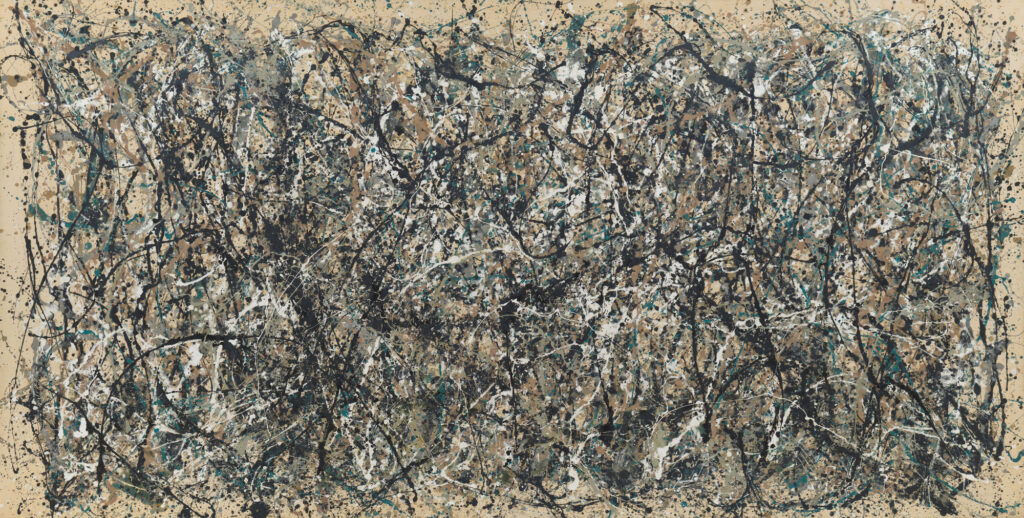
Jackson Pollock, One (Number 31), 1950, Museum of Modern Art (MoMA), New York, NY, USA.
But just as in the advertising industry, Saatchi quickly understood the inner workings of the art world and succeeded in establishing himself as a key figure worldwide.
Charles Saatchi does not take half measures. When he gets involved in something, he does it at 100%, or he doesn’t get involved at all. In the beginning the ad man was so obsessed with acquiring new art works that he would even take his one hour lunch breaks to go on studio visits.
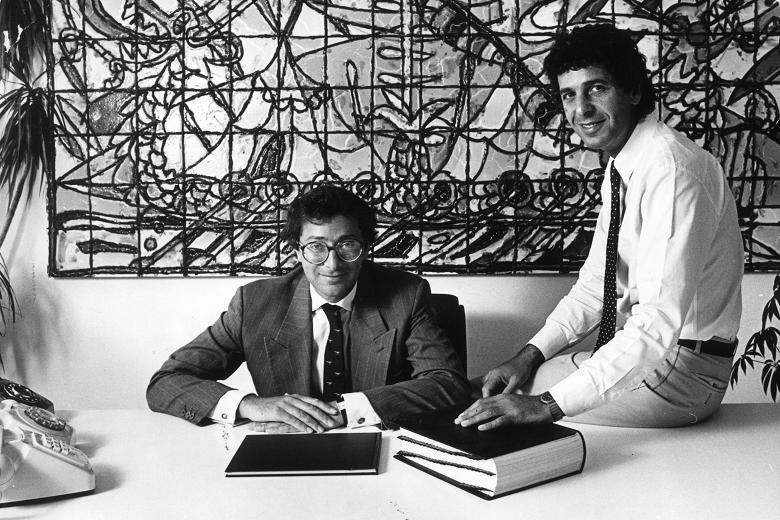
From right to left: Charles and Maurice Saatchi at their office, 1986. The Times.
Unfortunately this enthusiasm faced some pitfalls. Overly ambitious, the Saatchi brothers pivoted too quickly when expanding their small agency into a multinational company. A couple of decades after its creation Saatchi & Saatchi went bankrupt. Shortly after, Charles and Maurice were fired from their own company and went on to create a new one: M&C Saatchi.
Charles Saatchi doesn’t seem to be afraid of failure or obstacles. In 2004, a fire at the Saatchi gallery destroyed a large part of his collection. The businessman’s reaction to the disaster was to buy new works and to display them in a bigger space than the previous gallery.
Because of his unorthodox methods, Charles Saatchi is both hated and respected at the same time. It must be said that he has an ambivalent attitude, which makes him come across as both the good guy and the bad guy.
Thus, Saatchi is first admired because of his flair for finding fresh, new talents. This has given him immense influence: as a trendsetter he can make or break artists’ careers. This superpower even has a name – the Saatchi effect.
If Saatchi likes an artist, he is capable of buying all their works at once. This sudden interest from the philanthropist increases their value on the market as well. On the contrary, when the ad man loses interest in an artist it can ruin their reputation. This has happened to Sandro Chia whose career as an artist was over after Saatchi sold all of his works overnight.
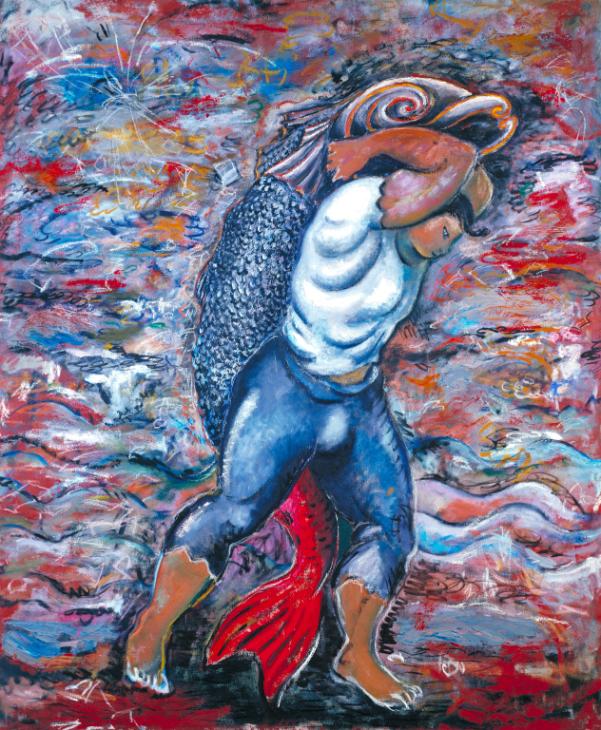
Sandro Chia, Water Bearer, 1981, Tate Gallery, London, UK.
In the end, people dislike Saatchi for the exact same reason he is admired, some tend to think he only uses his power for his own good. Saatchi is often seen as a strategic dealer, translating capitalistic practices from the advertising business into art for his own profit, rather than being a genuine passionate collector.
Despite his publicity, he remains a mysterious persona. True to his advertising background, Charles Saatchi operates in the shadows. Despite being a notorious figure he rarely gives interviews and he controls his world from behind the scenes. In fact, Charles Saatchi controls everything, at all levels. Collector, dealer, curator, gallery owner, writer… The only role he has not embodied yet is that of an artist!
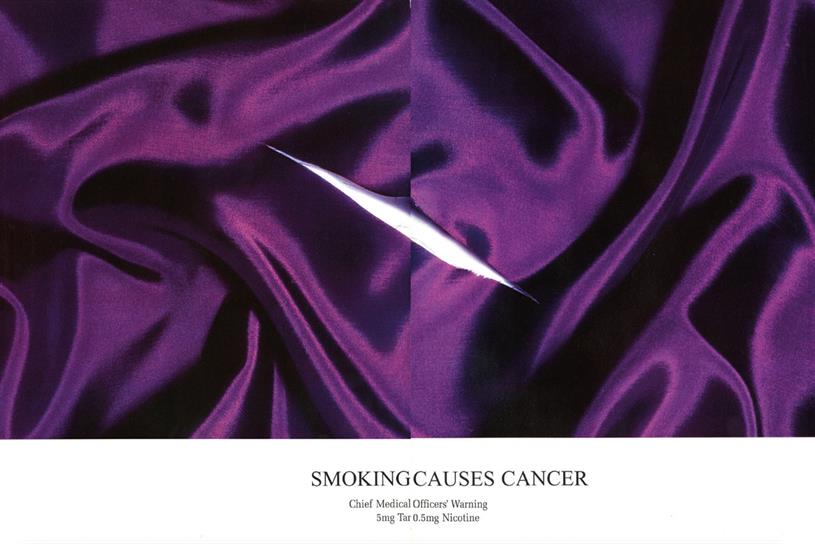
Poster created by Charles Saatchi for the cigarette brand Silk Cut in 1983. The campaign was inspired by the Argentinian-Italian artist Lucio Fontana’s cut paintings. Campaign Live.
Charles Saatchi is best known for being the benefactor of the Young British Artists, or YBAs for short. In art history, YBAs is something of an anomaly, as it is neither an art movement nor a collective. Saatchi coined the term to refer to a group of artists he had started to collect.
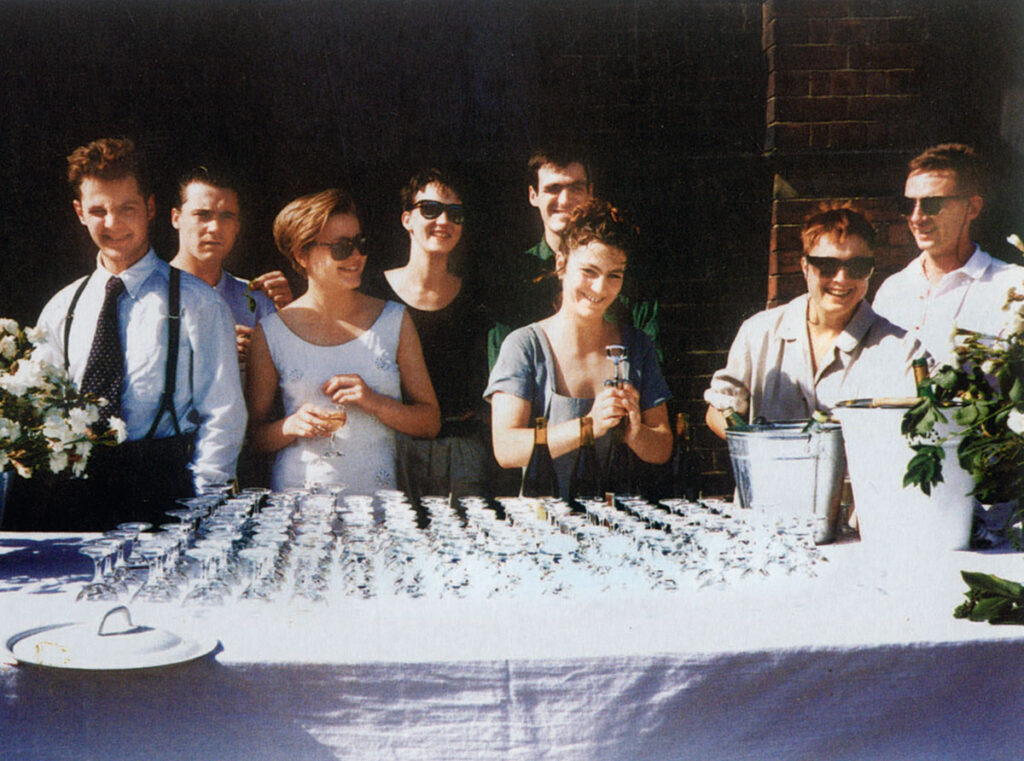
Freeze opening party, showing (left to right): Ian Davenport, Damien Hirst, Angela Bulloch, Fiona Rae, Stephen Park, Anya Gallaccio, Sarah Lucas and Gary Hume. Phaidon.
Once the label YBAs was created, he used his gallery to organize six exhibitions in less than four years to promote his protégés. Thanks to his connections, he was even able to use the Royal Academy of Art as a platform for the historical exhibition Sensation. In less than two years the YBAs rose from anonymity to stardom, thus allowing them to showcase their works in the biggest institutions around the world.
This aggressive marketing technique is reminiscent of the process used to develop the Saatchi & Saatchi company. However, this gamble succeeded as 30 years later members of the YBAs such as Tracey Emin are among the most celebrated, expensive artists in the world.
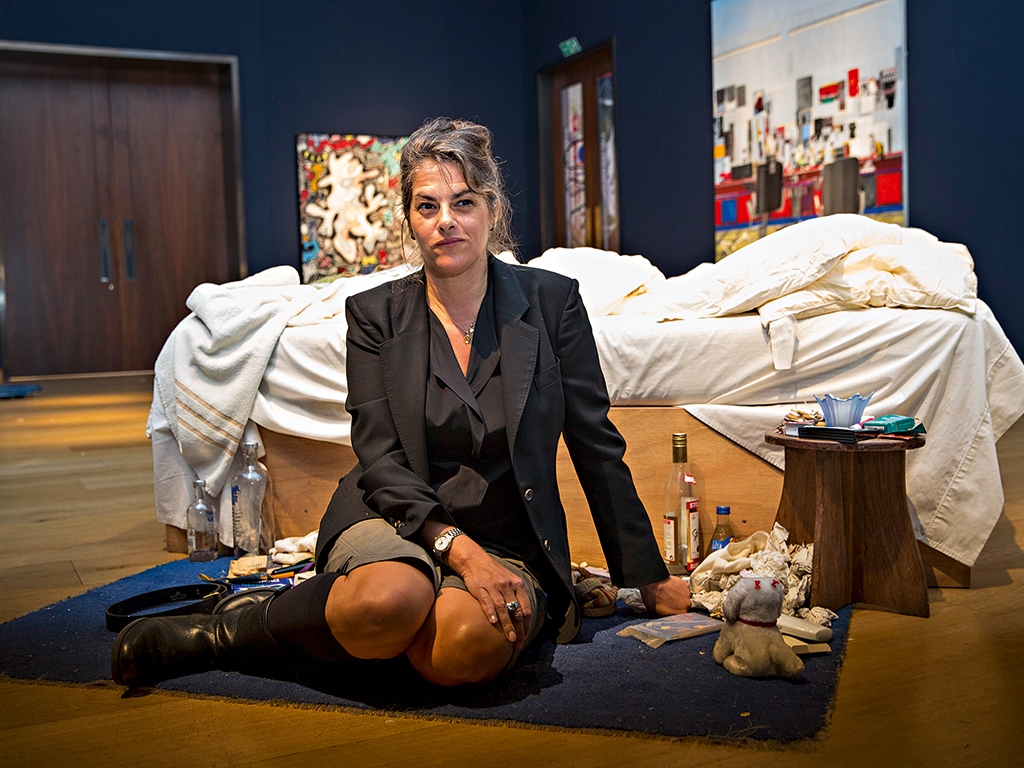
Tracey Emin with her work My Bed (1998). Rob Stothard/Getty Images.
If Charles Saatchi invented the YBA label, his own brand identity could be defined with a simple word: provocation. Provocation in his methods, in the works he collects, the artists he supports, and even provocation in his exhibitions.
The aforementioned exhibition Sensation might have been his biggest blow. Using the Royal Academy, a well respected traditional art institution in the UK, Charles Saatchi presented works such as the paintings Myra by Marcus Harvey and The Holy Virgin by Chris Ofili. The former created a scandal in the UK, while the latter provoked an enormous political controversy in New York. Since the reception of the works differs from one country to another, it proves the adman is capable of shocking the whole world.
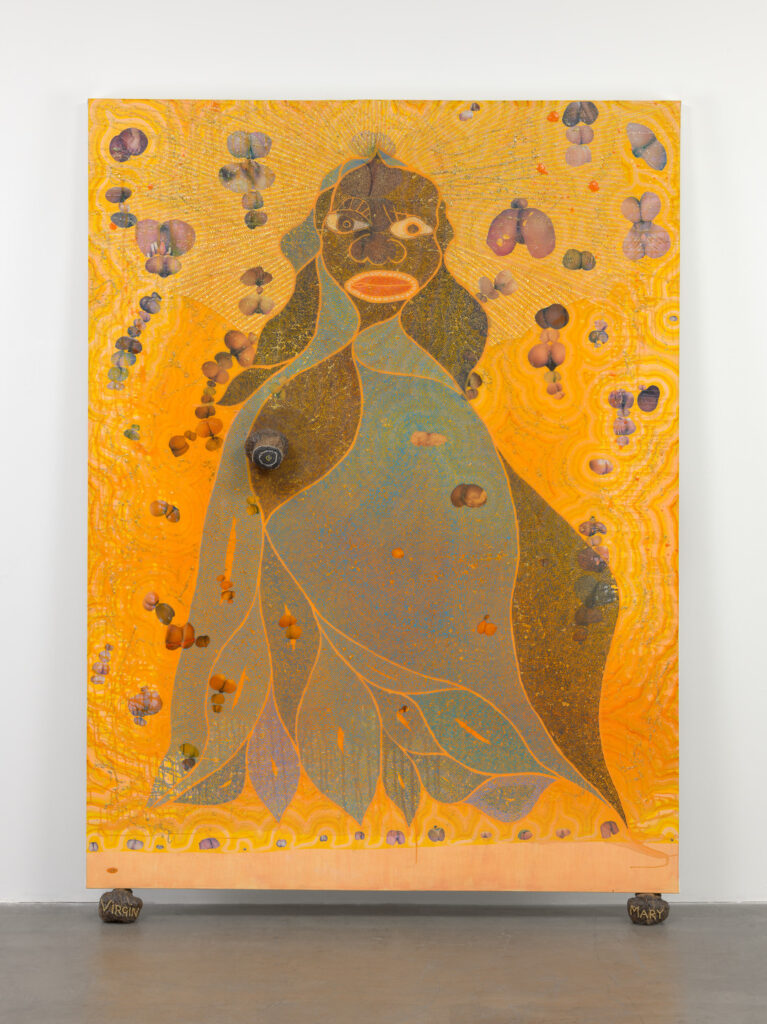
Chris Ofili, The Holy Virgin Mary, 1996, acrylic, oil, polyester resin, paper collage, glitter, map pins, and elephant dung on canvas, Museum of Modern Art (MoMA), New York, NY, USA.
Even after the YBAs venture, Charles Saatchi favors sensational art that creates strong reactions, whether it is disgust, surprise, or amusement. Unfortunately, by its very nature, the element of surprise cannot last over time. People have gotten used to being shocked. More than that, it is even what they expect from the notorious art patron. Caught up in his own game, Saatchi seems to be biting his own tail. But even though his influence has diminished over the past few years, his actions have considerably changed the art world.
As an adman, Charles Saatchi is in favor of the democratization of art. His strategy of making a buzz can be perceived as an attempt to popularize contemporary art. In theory, this strategy benefits everyone: Saatchi’s own interests, the public whose interest is diverted, and above all, the artists who get to earn a living from their art.
It would be better for Britain to support living artists than raise millions to save Old Master paintings from going abroad.
My Name is Charles Saatchi and I am an Artoholic (2009)
Since the British establishment was too focused on dead guys who only interest a few people, Saatchi took it upon himself to bring art to the masses in any way possible. In 2010, the philanthropist even proposed donating his collection to the Nation, but it didn’t go through.
The most popular endeavor is the Saatchi Gallery, which offers free admission. Exhibiting works by young artists who are both accessible to connoisseurs and the curious visitor, Saatchi reunites two estranged worlds. Since its creation in 1985, the Saatchi gallery has had the reputation of being one of the best institutions for contemporary art in Europe, attracting an average of 1 million visitors per year before the COVID-19 crisis.
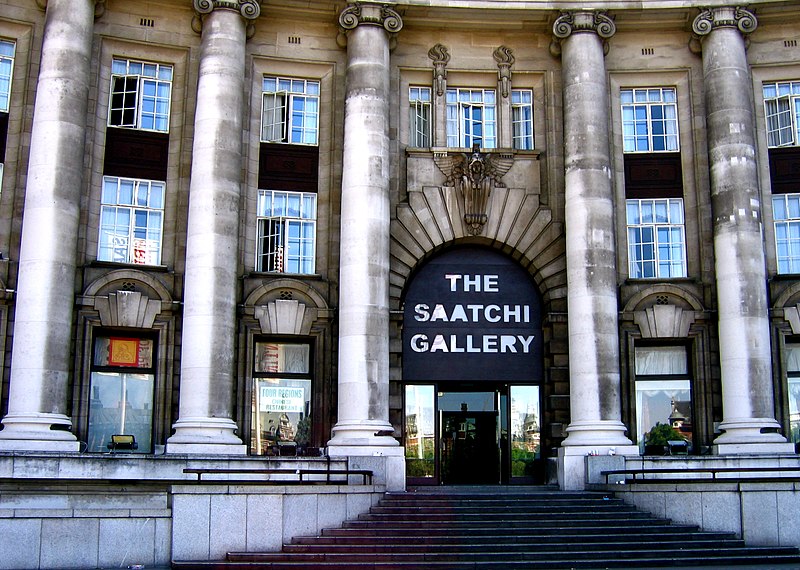
Entrance of the Saatchi gallery at County Hall, London, UK. Photo by C. G. P. Grey via Wikimedia Commons (CC BY 2.0).
Meanwhile the British tycoon pushed even further by giving his name to a reality TV show, The School of Saatchi (2009). Following six contestants going through different assignments, the show aimed to discover the new rising star of the art world. In the 2000s, reality shows were not as familiar as they are today. It wasn’t quite a novelty either, but it was still controversial. With The School of Saatchi, art and popular culture have never been so intertwined.
Not only did Saatchi participate in shifting attention towards living artists, he also attracted a new kind of collector.
Long before online sales became a common thing, the businessman created an online marketplace where any artist could submit their works for sale.
As an online platform, the website has lower rates than traditional auction houses: especially since Saatchi didn’t take any commission from it. This popular tool has opened the door to collectors who are not necessarily ultra-rich. Even if Saatchi is no longer affiliated with the website anymore, it is still running today.
On the other hand, Saatchi’s approach also assisted in paving the way for avid money makers to use art as an investment.
Traditionally an art collection is a cohesive set of works demonstrating the taste of its owner, which gradually grows over time. Charles Saatchi however, regularly renews his collection, reaping some profits at the same time. One art critic coined the term “specullector”, a merging between art collector and speculator to define Saatchi’s binary attitude.
Whether Saatchi consciously makes a profit from his philanthropic activities, this mode of operation closely resembles a consumer society that Saatchi embodies as an advertising man: buying en masse to dump carelessly when interest is lost. But art works are not mere products and by doing so, Saatchi has greatly impacted the whole art ecosystem.
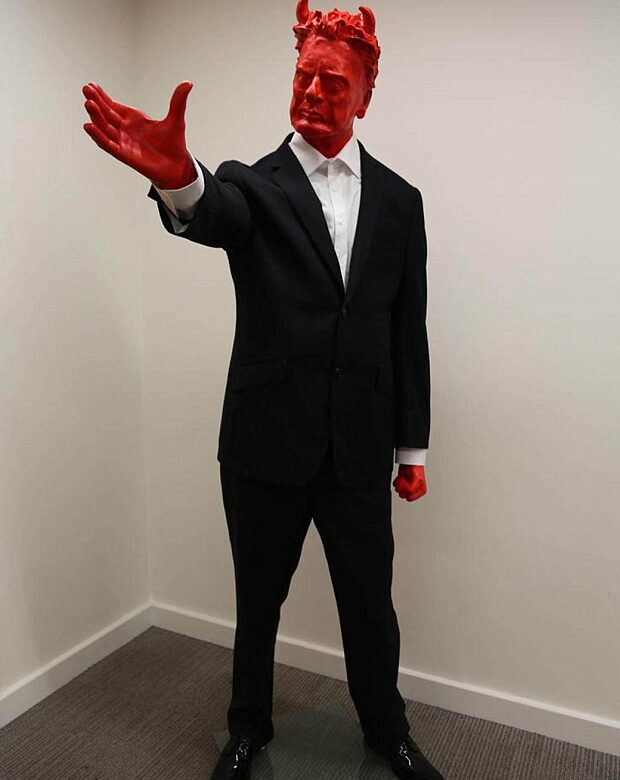
Playful Tiff, 2013. DailyMail.
The art world’s current obsession with emerging artists certainly owes a lot to the British businessman. Nowadays, everyone — curators, critics, dealers and collectors alike — tries to be the first person to discover the new pearl. This risky approach can bring a lot of benefit to those involved if it works. If not, it is the artists who suffer the consequences. Some of them have spoken out about it:
Obviously there was a lot of press […] which was good fun and I got some leads from it, but that all died down very quickly, and I’ve been going on under my own steam.
Despite all the grievances against him, Saatchi did change the art industry. For better or for worse. Yet, the first institution to benefit from this situation is the art market itself. Indeed, record sales for contemporary art are increasing to the point that its popularity has almost surpassed that of Old Masters among buyers.
Consequently, even the artists’ status changed. From geniuses, they have now reached the status of pop stars. The most obvious example is Damien Hirst, Saatchi’s first little protégé who is not only one of the most famous artists in the world, but also one of the richest.
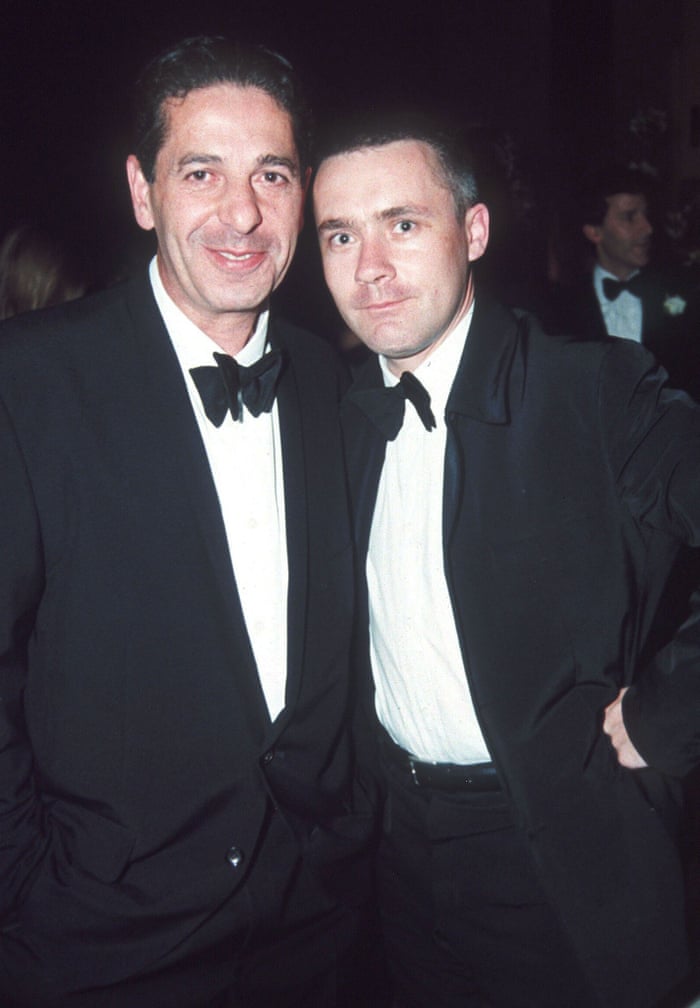
Damien Hirst with Charles Saatchi in 1997. Photo by Richard Young/Rex/The Guardian.
Even if Saatchi admits that his heydays are over, he left an indelible mark both on advertising and on art.
DailyArt Magazine needs your support. Every contribution, however big or small, is very valuable for our future. Thanks to it, we will be able to sustain and grow the Magazine. Thank you for your help!